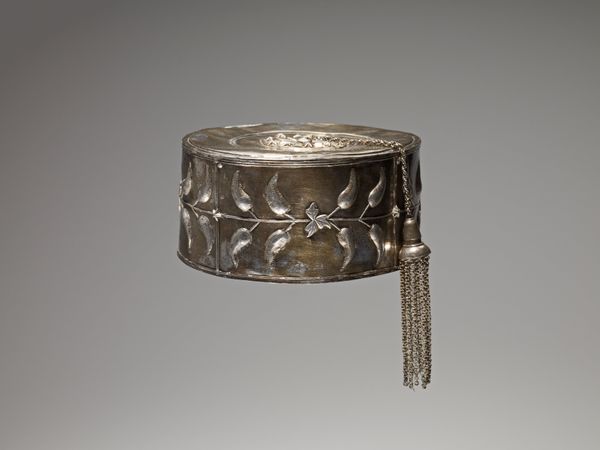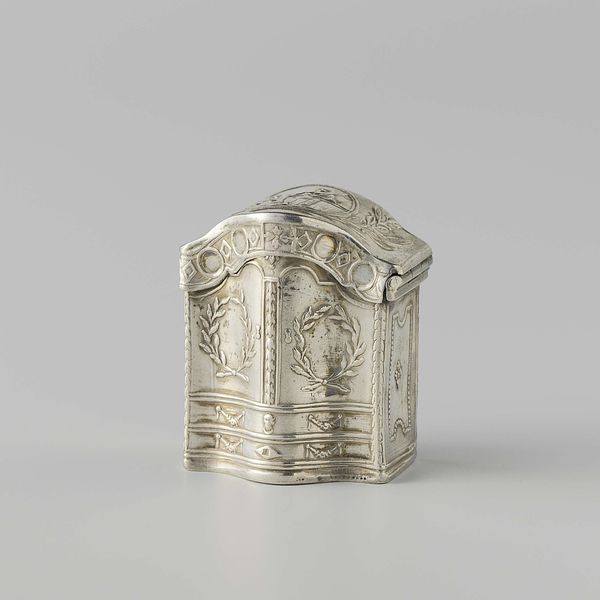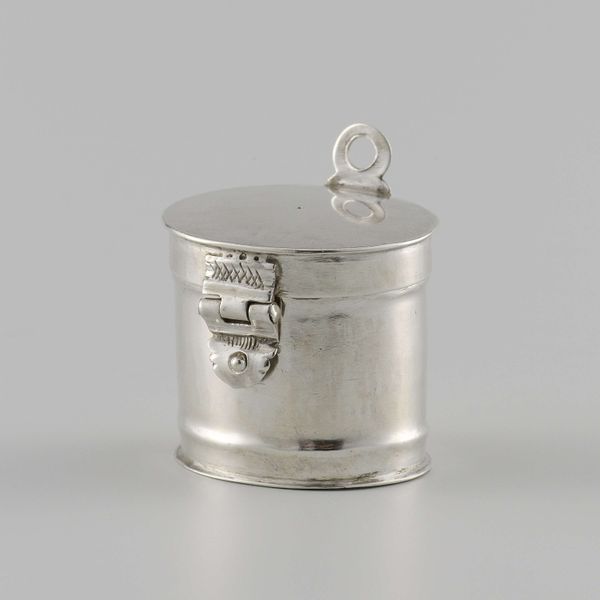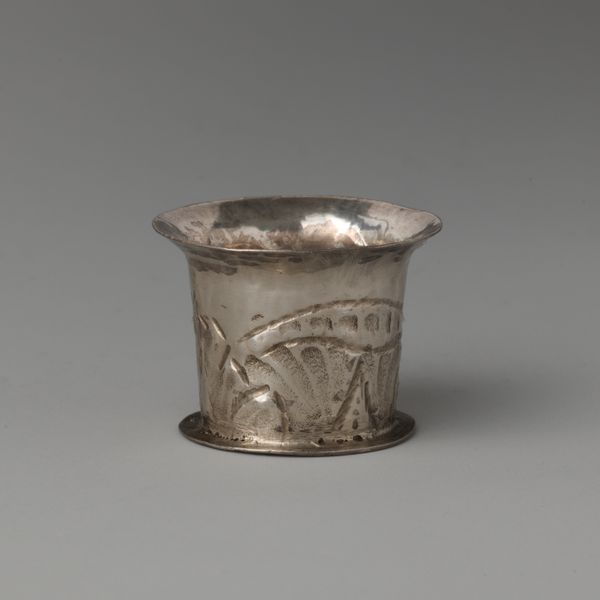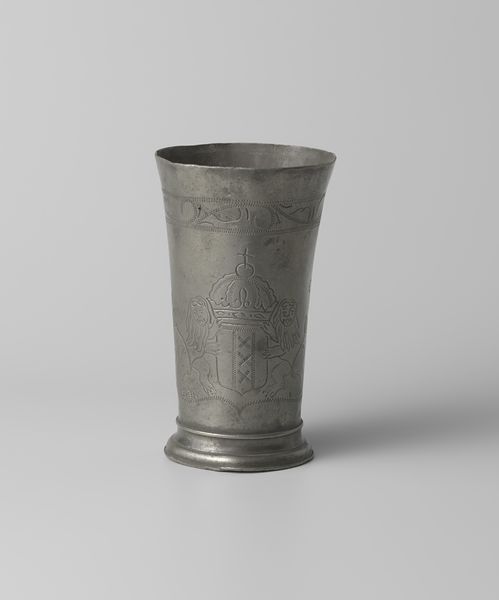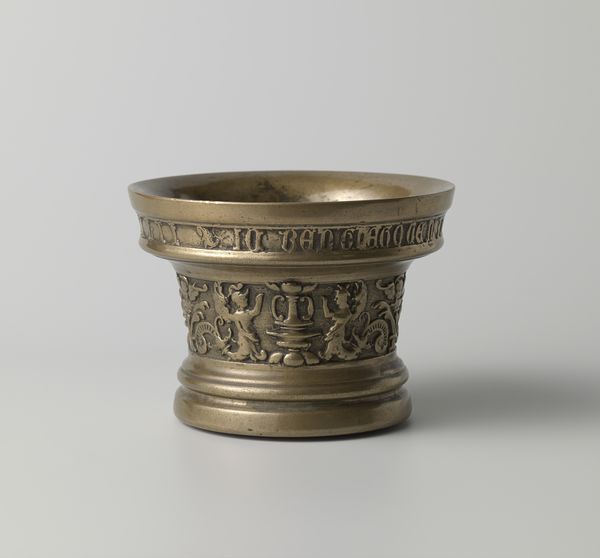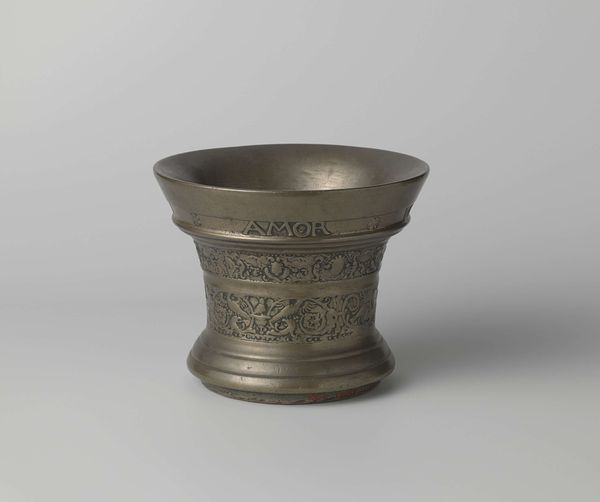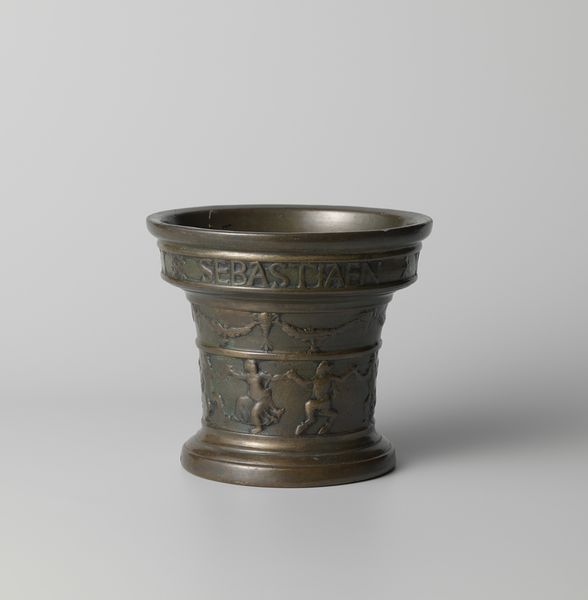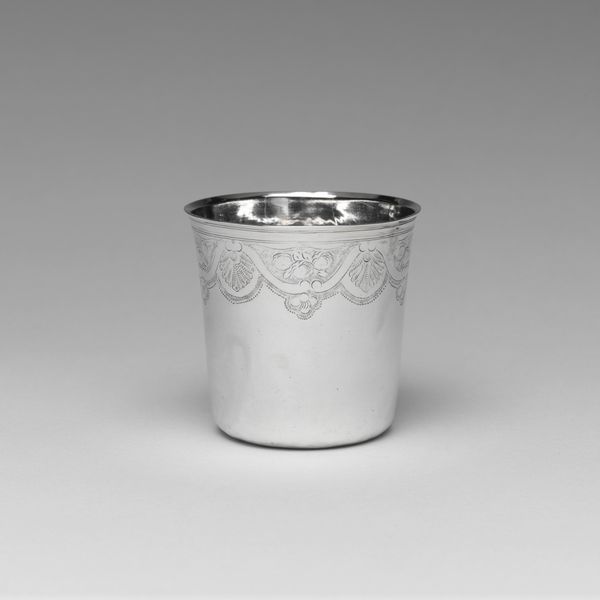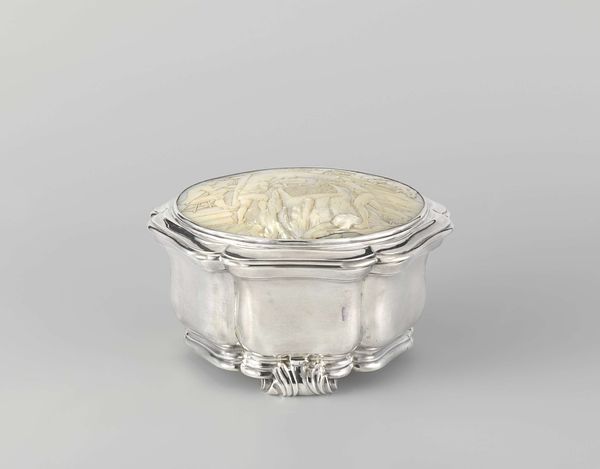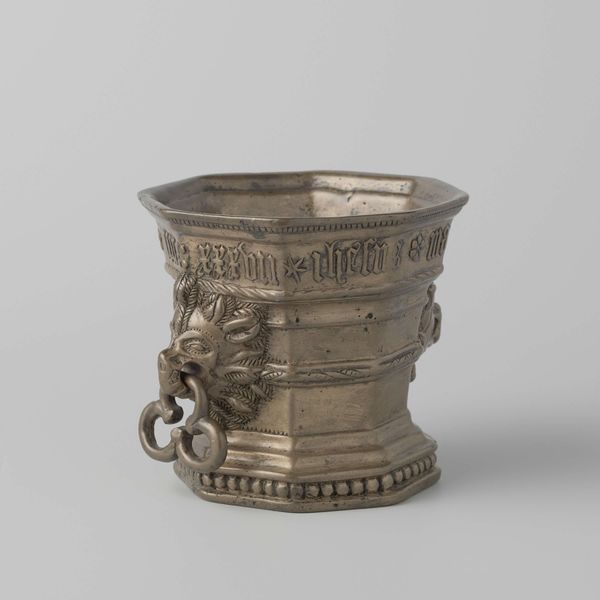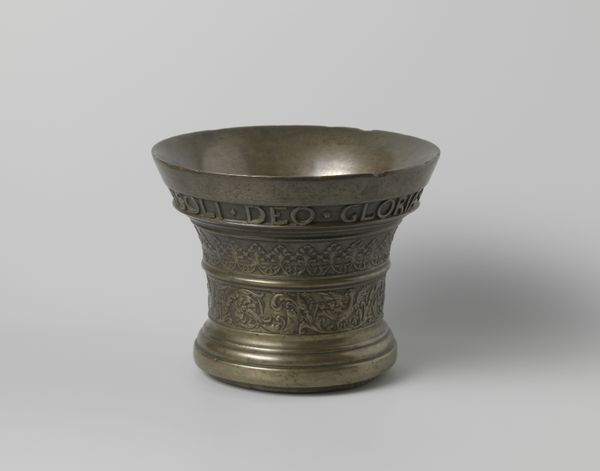
Copyright: Rijks Museum: Open Domain
Editor: Here we have the “Reukdoos,” a small, metal sculpture from around the 1780s, currently housed in the Rijksmuseum and created by an anonymous artist. It feels… almost propagandistic, with its formal portraits embossed on the side. What’s your take on it? Curator: I see this "Reukdoos" as a fascinating artifact reflecting the complex social and political landscape of the late 18th century. The presence of portraiture, particularly of what seems like an authoritative figure, prompts a question: who was this intended for, and what message was it meant to convey? Editor: So it's not just a pretty box? Curator: Not at all. Consider the context: Europe was on the cusp of massive upheaval, with Enlightenment ideals challenging existing power structures. The box may seem decorative, but the carefully chosen imagery, the miniature scale allowing for personal ownership...all these aspects become potent when considered alongside broader historical currents. Who held power? Who were the subordinate and the dispossessed? Editor: I never would have thought of that. How does the Baroque style fit in with all the sociopolitical implications? Curator: The Baroque aesthetic, even in this miniaturized form, served to reinforce hierarchy and project power, albeit, at the end of this artistic cycle, with the undercurrents of an inevitable and upcoming change. Are the figures surrounding the central figure indicative of colonial relationships or familial legacy? Even seemingly decorative art pieces can illuminate a struggle for power. Editor: I see it now, this seemingly insignificant piece holds within itself an ongoing negotiation between traditional powers, upcoming socio political restructuration and the legacy of colonial power. Thanks! Curator: Exactly! And this is just the beginning. The beauty of art history lies in uncovering those silent narratives.
Comments
No comments
Be the first to comment and join the conversation on the ultimate creative platform.

